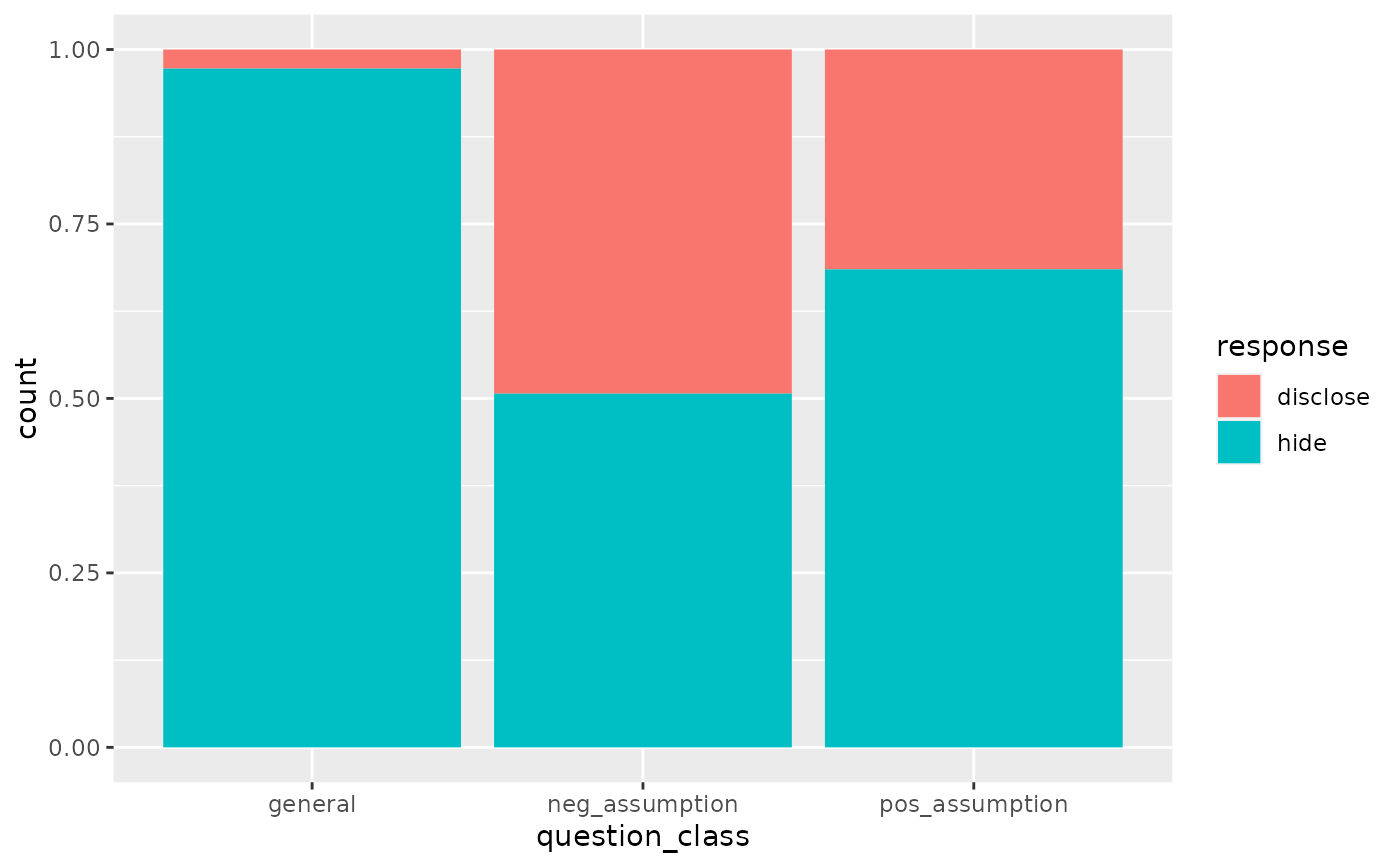In this experiment, each individual was asked to be a seller of an iPod (a product commonly used to store music on before smart phones...). They participant received $10 + 5% of the sale price for participating. The iPod they were selling had frozen twice in the past inexplicably but otherwise worked fine. The prospective buyer starts off and then asks one of three final questions, depending on the seller's treatment group.
Format
A data frame with 219 observations on the following 3 variables.
- question_class
The type of question:
general,pos_assumption, andneg_assumption.- question
The question corresponding to the
question.class- response
The classified response from the seller, either
discloseorhide.
Source
Minson JA, Ruedy NE, Schweitzer ME. There is such a thing as a stupid question: Question disclosure in strategic communication.
Details
The three possible questions:
General: What can you tell me about it?
Positive Assumption: It doesn't have any problems, does it?
Negative Assumption: What problems does it have?
The outcome variable is whether or not the participant discloses or hides the problem with the iPod.
Examples
library(dplyr)
library(ggplot2)
# Distribution of responses based on question type
ask |>
count(question_class, response)
#> # A tibble: 6 × 3
#> question_class response n
#> <chr> <chr> <int>
#> 1 general disclose 2
#> 2 general hide 71
#> 3 neg_assumption disclose 36
#> 4 neg_assumption hide 37
#> 5 pos_assumption disclose 23
#> 6 pos_assumption hide 50
# Visualize relative frequencies of responses based on question type
ggplot(ask, aes(x = question_class, fill = response)) +
geom_bar(position = "fill")
 # Perform chi-square test
(test <- chisq.test(table(ask$question_class, ask$response)))
#>
#> Pearson's Chi-squared test
#>
#> data: table(ask$question_class, ask$response)
#> X-squared = 40.128, df = 2, p-value = 1.933e-09
#>
# Check the test's assumption around sufficient expected observations
# per table cell.
test$expected
#>
#> disclose hide
#> general 20.33333 52.66667
#> neg_assumption 20.33333 52.66667
#> pos_assumption 20.33333 52.66667
# Perform chi-square test
(test <- chisq.test(table(ask$question_class, ask$response)))
#>
#> Pearson's Chi-squared test
#>
#> data: table(ask$question_class, ask$response)
#> X-squared = 40.128, df = 2, p-value = 1.933e-09
#>
# Check the test's assumption around sufficient expected observations
# per table cell.
test$expected
#>
#> disclose hide
#> general 20.33333 52.66667
#> neg_assumption 20.33333 52.66667
#> pos_assumption 20.33333 52.66667
